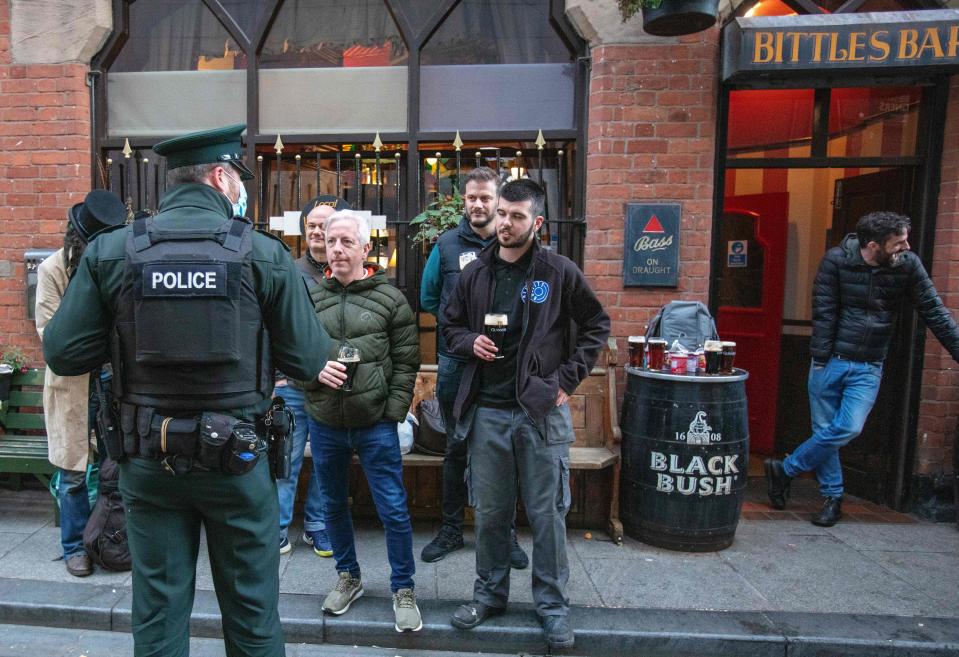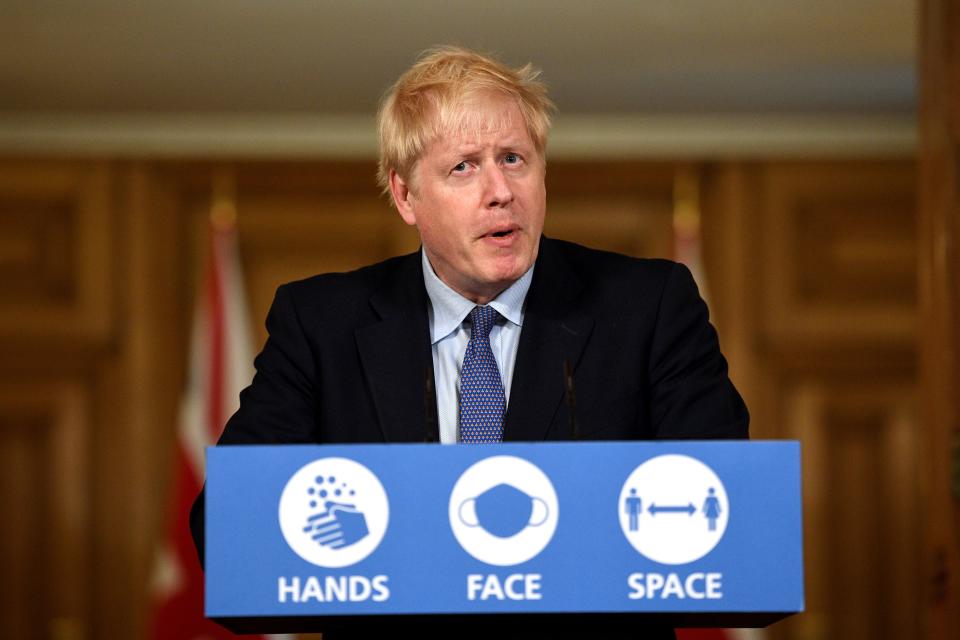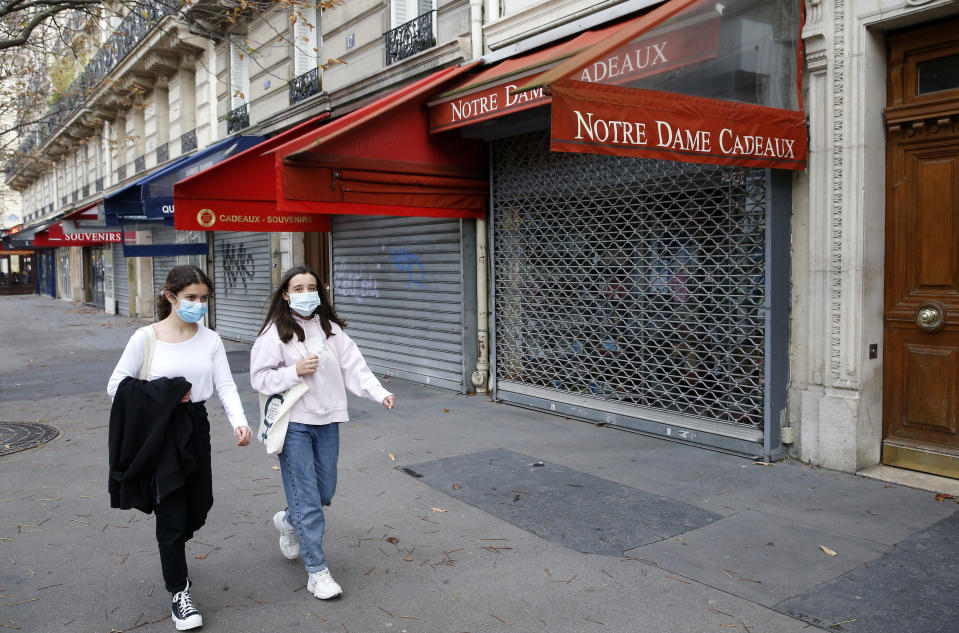Can 'circuit-breaker' lockdowns save Europe from a second coronavirus wave?
WASHINGTON — It was not until late September that Ireland reopened its “wet” pubs, which serve alcohol but not food. Restaurants had reopened in June, but drinking-only establishments had to wait three more months. By the time they were set to let the beer flow again, they had endured the European continent’s longest shutdown, having first closed in March.
Even if the pubs in the capital city of Dublin remained closed, the reopening was seen as a major step in a country where pubs have a cultural significance that goes far beyond the consumption of alcohol. “The mental health benefits this opportunity will offer people are enormous,” an executive with the Vintners’ Federation of Ireland said at the time.

Only it didn’t last. On Monday, Ireland became the first country to reimpose the kind of restrictions that marked the spring, after seeing infection rates spike across the nation.
On the whole, the European continent has more new daily cases, per 100,000 people, than does the United States, according to statistics compiled by Our World in Data. Outbreaks have been especially severe in Belgium and the Czech Republic. Only a few nations, such as Finland, are currently having success in driving the rate of infection in the right direction.
That has dismayed ordinary citizens and frustrated experts and elected officials who thought they had the virus defeated.
“If you need to do lockdowns, you need to do lockdowns," said George Rutherford, an epidemiologist at the University of California at San Francisco. “We’re entering a period of extreme risk.”
Now some European countries are pinning their hopes on a so-called circuit-breaking strategy that recently slowed a second viral wave in South Korea. Circuit breakers have also been implemented in Singapore and Israel.
The goal is to prevent the coronavirus from spreading with shorter shutdowns — lasting perhaps only two or three weeks instead of months — than those that were imposed last spring.
Circuit-breaker lockdowns (sometimes called “firebreaks,” a reference to wildfire mitigations) also differ from the kind of tiered approach that has been implemented in many European countries and U.S. states. The tiered approach allows sectors of society — schools, restaurants — to open depending on how much coronavirus is circulating; a circuit breaker would make no such distinctions, outside of essential businesses.
If the tiered approach is akin to a diet, the circuit breaker is like fasting: perhaps not bound to be especially pleasant but all the more effective for it. It is, in essence, a lockdown rebranded — and shortened.
As cases were rising in the U.K. in late September, its governmental Scientific Advisory Group for Emergencies strongly endorsed a circuit breaker lasting two to three weeks in order to “reset the incidence of disease to a lower level.” There may need to be more than one circuit breaker, however, in addition to better contact tracing to tamp down smaller outbreaks before they grow into larger ones.

Some have even advocated regular, planned circuit breakers. These would be less reactive, and less abrupt, then measures taken in response to viral spikes. That would provide certainty while also disrupting the chains of transmission.
Ireland is one of the several countries now considering such measures. “This would represent a short, hard lockdown to knock the virus on the head again, and reduce case numbers to a manageable level. Similar to a second lockdown — but not as long,” said Irish Deputy Prime Minister Leo Varadakar. Other parts of the British Isles are also either considering or about to implement similar measures.
On the European mainland, where the pandemic has also been resurgent, there appears to be less appetite for a return of stay-at-home orders, although they have not been ruled out. “Non-pharmaceutical interventions remain critical until there is a vaccine and adherence to those is paramount to try to prevent generalized lockdowns,” a spokesman for the health division of the European Commission told Yahoo News.
Contemplating lockdowns once more, no matter their length, is an understandably dispiriting experience. “How could we be here again?” wondered the British public health scholar Clare Wenham.
The question is being posed all over the continent. The new wave seems to have spared neither countries that had done well in the spring nor those that suffered acutely during the pandemic’s first wave.
“How Iceland Beat the Coronavirus,” went a headline in the New Yorker on June 1. But as people ventured out, the coronavirus was waiting. Earlier this month, the island nation placed new restrictions on some businesses.
Iceland is faring much better than many of its neighbors, not to mention the United States. Yet that isn’t likely to blunt the disappointment of new restrictions, which come as Iceland, just south of the Arctic Circle, plunges into a prolonged period of winter darkness.
Unlike Iceland, Italy had a brutal spring, becoming the first European country to be devastated by the coronavirus. The pandemic initially overwhelmed its health system, killing 35,000 people by the start of summer. And yet Italians did not attain the coveted status of herd immunity, a controversial concept pushed by White House coronavirus adviser Scott Atlas but shunned by most others in the scientific community.

Researchers have found that even in Italy and Spain, which had been so hard hit by the virus, “nationwide prevalence of antibodies varies between 1% and 10%.” Even in “heavily affected urban areas,” that number only reached about 15 percent, according to a study on herd immunity published last month in Nature. Herd immunity would require at least 70 percent of the population to have coronavirus antibodies.
How did Europe get here? “People did not stay in their pods,” said Rutherford, the UCSF epidemiologist. Too many Europeans traveled throughout the summer.
Dr. Emanuele Capobianco, health director at the International Red Cross, said that not only did Europe open too quickly, it did so without the kind of aggressive contact-tracing system that would allow the continent to contain regional flare-ups of the coronavirus. In addition, he said that some leaders “supported the idea that the virus may have disappeared.”
That idea has been endorsed by the American president, Donald Trump, who has insisted that the virus is all but vanquished, despite ample evidence to the contrary. If anything, the European situation suggests it is about to launch a second offensive.
There is a warning in European’s current situation for the United States, UCSF’s Rutherford explained. That’s because Europe is on a higher longitude than North America and subject to different weather forces. Europeans therefore tend to “hunker down” earlier than Americans, Rutherford said, which means that what is currently happening in Belgium and the Czech Republic could be a grim preview of what awaits South Dakota and New York in just a matter of weeks.
Despite concerns over a second wave, doctors have become much better at treating the coronavirus, reflecting just how much the world has learned about a virus that appeared just under a year ago. Fewer people are dying. But with immunity a distant goal and vaccines perhaps not available until the spring, there is still plenty of opportunity for the coronavirus to disrupt lives.
So far, countries facing a new coronavirus wave have opted for somewhat less restrictive measures than outright lockdowns, including curfews (Paris), the shuttering of bars and restaurants (Belgium) and a reversion, in places, to remote learning (Italy).

The European Commission spokesman acknowledged to Yahoo News that, loathed as lockdowns may be, they could return. “Despite all measures in place to avoid getting to the stage of lockdowns, we recognize that this may be necessary depending on the epidemiological situation,” he said.
The U.K. appear to be the most amenable to that reality, especially in the wake of Prime Minister Boris Johnson’s harrowing battle with the coronavirus last spring. He announced a reopening plan just days after emerging from hospitalization. Some warned it was too soon. “We cannot relax our guard by very much at all,” an infectious disease expert at the London School of Hygiene and Tropical Medicine told the Guardian. Others said that until a comprehensive contact tracing system was in place, lifting lockdown orders would be premature.
A politician who has been compared to Trump and has closely studied his American counterpart’s approach to politics, Johnson moved ahead in any case, with bars and restaurants reopening on July 4.
By late September, public health experts fears were realized: Infection rates increased to 9,600 new daily cases throughout the nation for the week of Sept. 19; for the preceding week, there had been an estimated 6,000 cases a day.
One month later, on Oct. 20, the U.K. recorded 21,000 new cases. Even though Johnson has rushed to implement new restrictions, his critics say those are insufficient. They have called on 10 Downing Street to discard halfway efforts and issue a circuit-breaker lockdown before the pandemic becomes impossible to control, in which case a longer lockdown could become necessary.
The opposition Labour Party has already endorsed the circuit breaker concept. “We need a national circuit breaker now to fix testing, protect the NHS and save lives,” Shadow Chancellor Anneliese Dodds said last week, referring to the National Health Service. Circuit breakers take pressure off hospitals, whose intensive care units can easily become overwhelmed if thousands of people become sick at the same time.

To a population exhausted by an endless stream of guidelines and directives, none of this has been welcome news. For some, a circuit breaker is just a lockdown with a slightly less ominous name, another unpleasant and confusing addition to an already unpleasant and confusing year.
The potential for new lockdowns comes as there is increasing recognition that shutting down vast swaths of society does not come without attendant risks. At the same time, the risk of doing nothing is even greater. Legions of leading scientists from around the world have signed the John Snow Memorandum, published in the Lancet earlier this month. While denouncing herd immunity as a “dangerous fallacy,” the document also called for measures that would allow life to “return to near-normal without the need for generalised restrictions.”
Dr. Capobianco of the Red Cross acknowledges that nobody wants to be driven back indoors by government fiat, whether for two weeks or three months. “I don’t think these are desirable,” he acknowledges, but they “may become inevitable in some parts of Europe." He foresees a “very tough autumn and probably winter.”
Most experts do not believe that a vaccine will be widely available until spring, if not later.
In any event, keeping the virus at bay rather than eradicating it altogether seems to be the best option for now. That means that governments should explain to citizens why the battles that had been seemingly won in April may have to be waged all over again in November.
“There is no time to be lost,” Capobianco said.
_____
Read more from Yahoo News:



